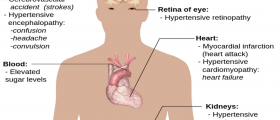
Nobody likes going to the doctor. The time seems to pass slowly while we are sitting in the waiting room and just being in the presence of sick people makes us wonder how many illnesses we are actually suffering from.
The truth is that a visit to the doctor's office is uncomfortable for majority of the people but up to 10-20% of adult people seem to develop a white coat syndrome. The doctors have not decided yet whether the white coat syndrome belongs to a group of psychological phobias or it is an actual medical condition.
White coat syndrome develops once the person comes to the doctor. It is also known as the white coat hypertension since it features with elevated blood pressure which occurs only during a visit to the doctor. A simple presence of the doctor or nurse results in elevation of the blood pressure. The adults are commonly affected by white coat syndrome even though it has also been reported in children. What needs to be emphasized is that people who develop high blood pressure at doctor's office have either normal or even low blood pressure. Apart from changes in blood pressure people suffering from white coat syndrome may additionally feel nervous in a vicinity of medical staff. This is explanation why patients avoid going to the doctor and stay away from hospitals.
Causes and Complications of White Coat Syndrome
The exact cause of white coat syndrome has not been identified yet. Still, there are several factors which may contribute to the condition. People with this syndrome are believed to suffer from fear or phobia of doctors. These may result from previous traumatic and bad experience connected to hospitals, doctors or even death. Some people are afraid of medical examination and procedures and this can be associated with the syndrome. And finally, these people are prone to think they might be suffering from certain illnesses.
The risk of increased blood pressure is minimal if it only lasts at the doctor's office. But if it lingers it may eventually contribute to certain heart conditions.
Treatment for White Coat Syndrome
The most important thing is to make sure whether the person is suffering from white coat condition. The best way to confirm or rule out this condition is to measure blood pressure inside and outside of the hospital or doctor's office at different times.
The approach for people who actually suffer from hypertension and those who only experience elevation of blood pressure in the presence of medical staff differs a lot. These patients may be prescribed medications to lower increased blood pressure although this does not prevent symptoms. The goal of the therapy is to eradicate the fear of medical staff. Counseling may be of great help in dealing with this problem.

















Your thoughts on this
Loading...